“Doctor Who”‘s 2024 Christmas special “Joy to the World” has some fun Easter eggs to past episodes that you might have missed! Specifically, these Easter eggs reference past episodes either written by or released during Steven Moffat’s tenure as the showrunner.
“Joy to the World” marks Moffat’s 50th writing credit on “Doctor Who”. So it’s only fair that both he and the production team got some fun nods to his history with the show in there!
This list will contain SPOILERS for the episode!
Easter Eggs in “Joy To the World”
#1: Wibbly-Wobbly, Timey-Wimey… Stuff.
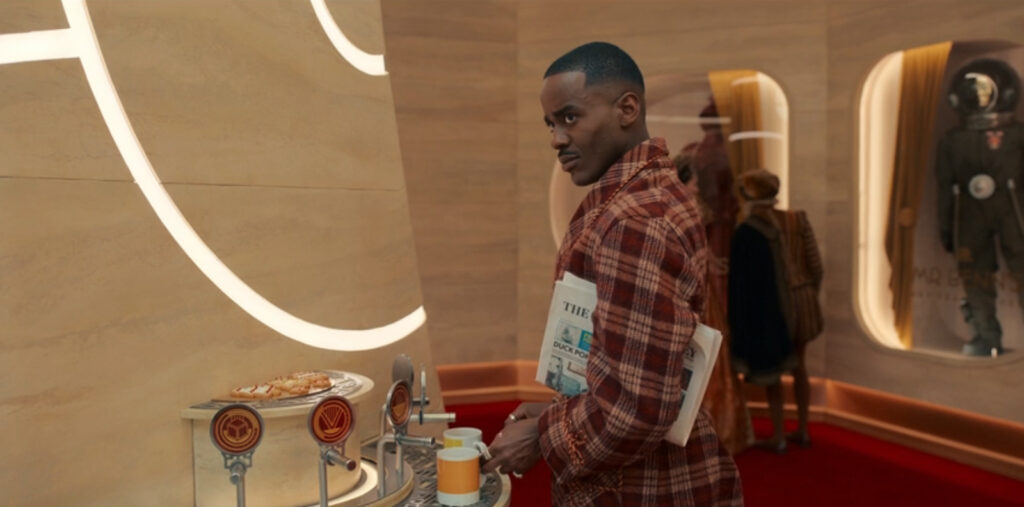
When the Doctor first lands in the Time Hotel he’s carrying two mugs and a morning paper. The paper’s name “The Timey Wimey” takes its name from series 3’s “Blink”, written by Steven Moffat. The phrase was used in an iconic moment of the episode when the Doctor is trying to explain (via a DVD Easter egg!) a tricky bit of time travel. How exactly can he be currently having a conversation with Sally Sparrow based on a transcript that will be created in her future while he is currently stuck in the past?
“People assume that time is a strict progression of cause to effect, but actually from a non-linear, non-subjective viewpoint, it’s more like a big ball of wibbly-wobbly, timey-wimey stuff.”
“Timey-wimey” has been used a few other times in the show since “Blink”, too. As for the paper the Doctor has picked up, it seems to be focused on time travel stories. A closer look reveals the paper’s slogan: “Reflecting your voice in the past & future”. And the front page headline contains another reference to a Steven Moffat episode.
#2: Why aren’t there any ducks?
Sharp-eyed viewers (or those who saw the full front page posted on “Doctor Who” social media) may have also spotted a few more references in the paper. The headline reads “DUCK POND MYSTERY SOLVED”. Another story in the paper is “PRISONER ZERO FOUND INNOCENT”. Both of these reference the first story in Steven Moffat’s run as “Doctor Who” showrunner: “The Eleventh Hour”.
In “The Eleventh Hour”, Leadworth (the home of companion Amy Pond), has a duck pond that “never has any ducks”. A recently regenerated Doctor noticed this, but did not have time to investigate. He had the more pressing matter of Prisoner Zero’s jailers threatening to incinerate the planet!
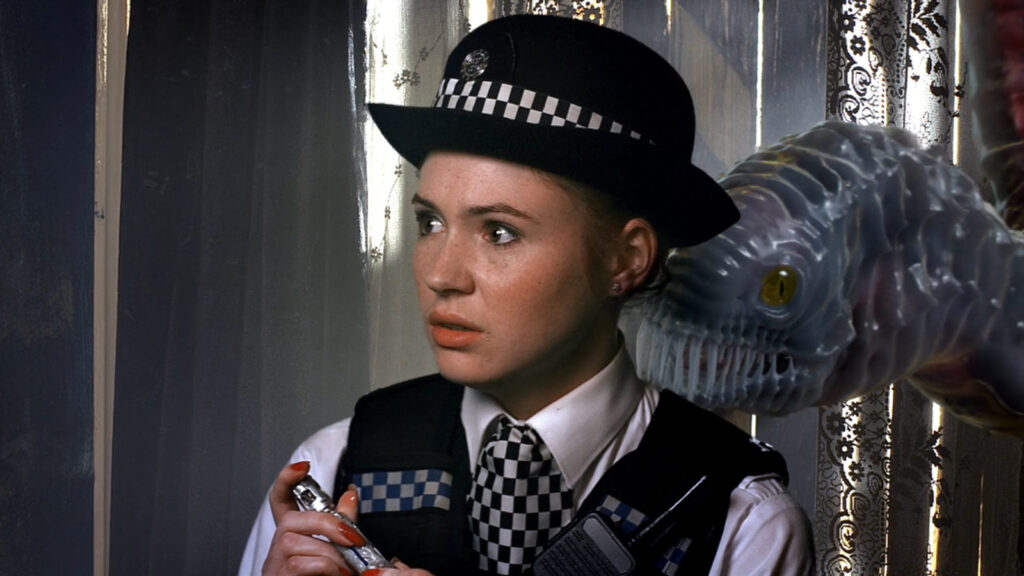
Prisoner Zero, of course, had been living on Earth for some time after escaping through a crack in time and space. Hiding in Amy Pond’s house and borrowing the faces of coma patients in the local hospital. Now it seems that the shapeshifting alien has gotten a retrial and been found innocent!
#3: Spoilers!
Another Easter egg that isn’t exactly a “Doctor Who” reference but does nod to another project of Moffat’s is the name of the bar. In the Time Hotel, the receptionist points guests in the direction of the hotel bar to wait for their room to be available. The name of the bar is “DeTamble’s”- a nod to Henry DeTamble of “The Time Traveler’s Wife”.
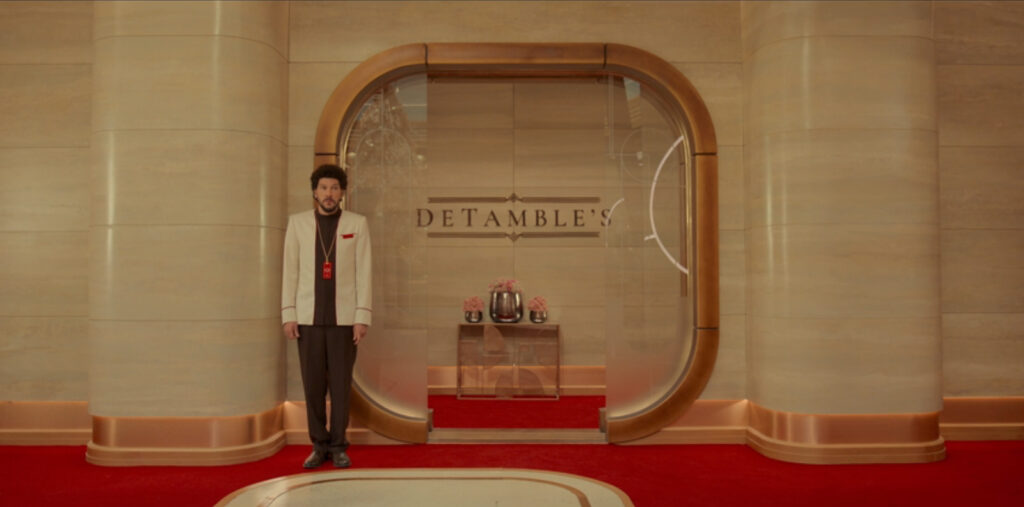
One of Steven Moffat’s post-“Doctor Who” projects was a TV series for HBO based on the book “The Time Traveler’s Wife” by Audrey Niffenegger. In the book (and adaptations), Henry DeTamble has a genetic mutation that allows him to spontaneously time travel, though he has no control over when and where he goes. The story follows Henry as he time travels throughout his own history. He often meets his wife, Clare Abshire, at various points in her life as well- all out of order. The first time he meets her from his perspective is at a library.
Sound familiar, “Doctor Who” fans?
The book served as inspiration for the Doctor and River Song’s relationship in the show. Though with both the Doctor and River being time travelers, their story is even more tangled. In “Dark Water”, a series 8 episode, the Doctor also has a copy of the book in the TARDIS.
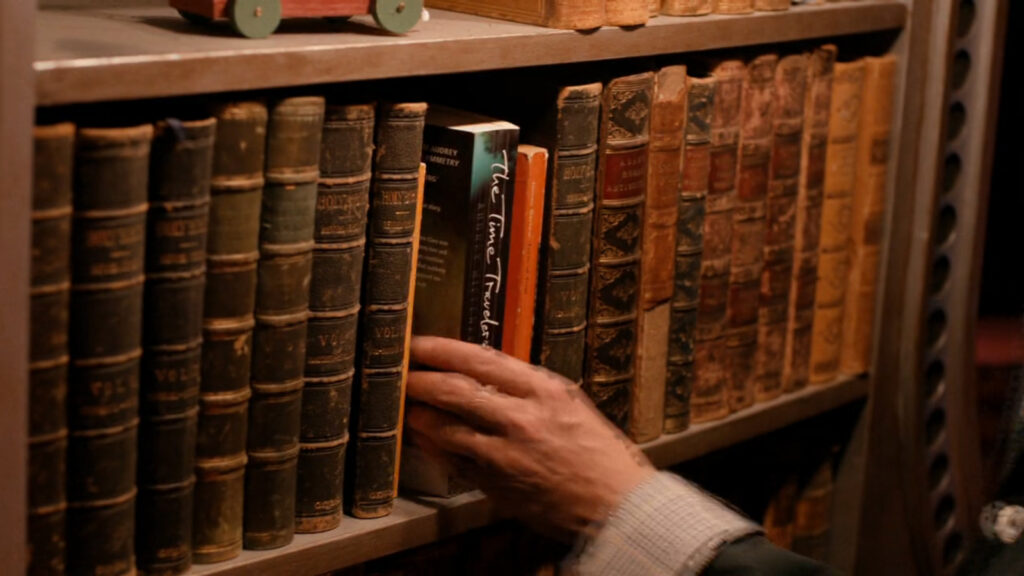
#4: Where I’ve always been going…
One of the first Easter eggs in the dialogue is when the Doctor is talking to, well, the Doctor! When the question of how the Doctor will find the code, he says he will have to take “the long way round”. This is a reference to the closing speech in the 50th anniversary special, “The Day of the Doctor”.
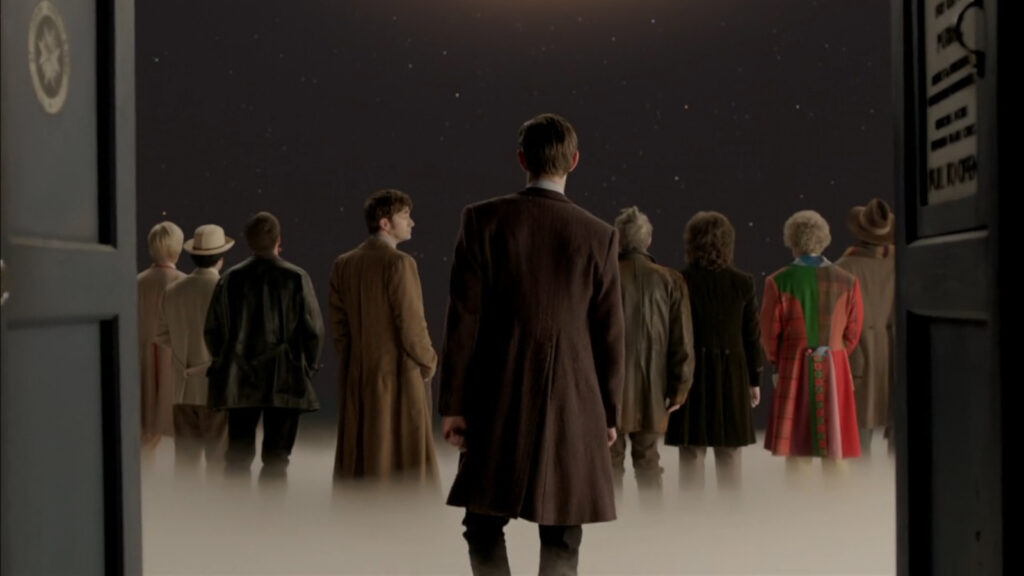
“It’s taken me so many years, so many lifetimes, but at last I know where I’m going. Where I’ve always been going. Home, the long way round.”
#5: Space age clockwork!
The “Timey Wimey” isn’t the only paper in the episode! Later in the episode when the Doctor is helping out at the hotel in 2024, he has another paper. If you look closely, the picture appears to be a Clockwork Droid from “The Girl in the Fireplace”! This 2006 episode, also by Moffat, also deals with time windows being opened up from a physical place in space and time. And though the full headline isn’t shown, the last word does appear to be “Versailles”. Perhaps the droids opened a window too far into the future of Madame de Pompadour? Or with the word “skeleton” being in the headline, maybe the remains of one of the droids was found?
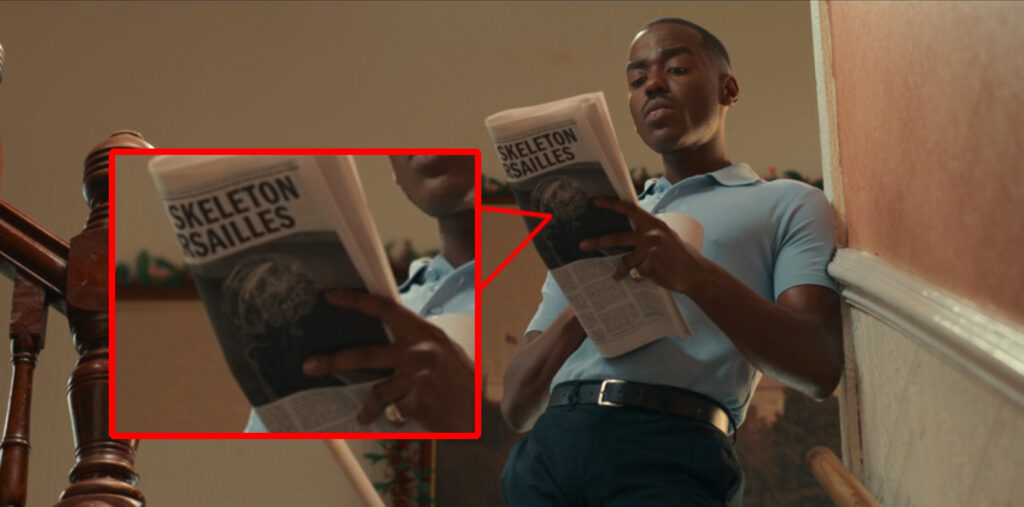
Even if that’s not a Clockwork Droid (the picture is, admittedly, not super clear), Versailles is definitely a nod to the series 2 Steven Moffat episode!
#6: This is when we talked
An exchange between the Doctor and Anita during his year-long stay on Earth references a Moffat-era episode. In season 6’s “The Doctor’s Wife” by Neil Gaiman, the TARDIS is placed into a human body and can speak directly with the Doctor. The Doctor complains “You didn’t always take me where I wanted to go.” The TARDIS replies, “No, but I always took you where you needed to go.” After the Doctor fixes Anita’s satnav, she apparently has experienced the same thing!
“You said you’d fix my satnav!”
“I did.”
“It doesn’t take me where I wanna go.”
“Ah! But it takes you where you need to go!”
“And why is my car blue now?”
And not only that, her car is blue now! Perhaps, like the microwave and the Doctor’s coffee mugs, it’s a little bigger on the inside now, too?
#7: Don’t even blink!
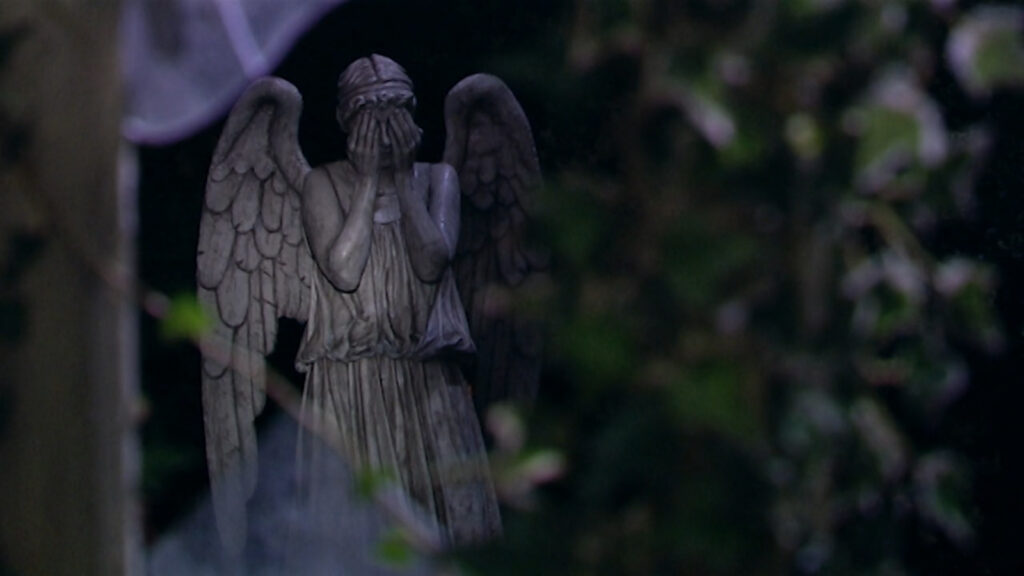
As the Doctor opens up more to Anita, he starts to tell her about his life. Over a meal, he tells her about the Weeping Angels. The Weeping Angels of course are original from Steven Moffat’s “Blink”. The terrifying baddies have also popped up in other episodes written by Moffat over the years. They featured in series 5’s “The Time of Angels” and “Flesh and Stone” and in series 7’s “The Angels Take Manhattan”.
“I’m telling you- I’m telling you!”
“That makes no sense!”
“I’m not kidding! Can’t move if you’re looking at them!”
“But that’s rubbish!”
The Weeping Angels have appeared in smaller roles in other episodes during Steven Moffat’s run of “Doctor Who”. Keep an eye out for them in “The God Complex”, “The Time of the Doctor”, “Hell Bent”, and “The Lie of the Land.”
Chris Chibnall also used the Weeping Angels in a few episodes while he was “Doctor Who”‘s showrunner. Most notably, they feature in series 13’s “Village of the Angels” where they capture the Doctor and transform her into a Weeping Angel herself so she can be brought back to the Division. The Weeping Angels also appear a few other times in series 13 as part of the overall “Flux” storyline.
An iconic and terrifying “Doctor Who” villain, the Weeping Angels appear in a ton of other “Doctor Who” audios, books, and even video games!
#8: They’re not vampires, they’re aliens
Now this one may be a bit of a stretch but hear me out: Another one of the possible Easter eggs that “Joy to the World” offers is seen in the hotel lobby. When the Doctor is leaving one of the toy TARDISs for Anita, a performance of “The Merchant of Venice” is being advertised on the TV. Could this be a nod to Toby Whithouse’s “The Vampires of Venice” in series 5? Or am I reaching a little too far?
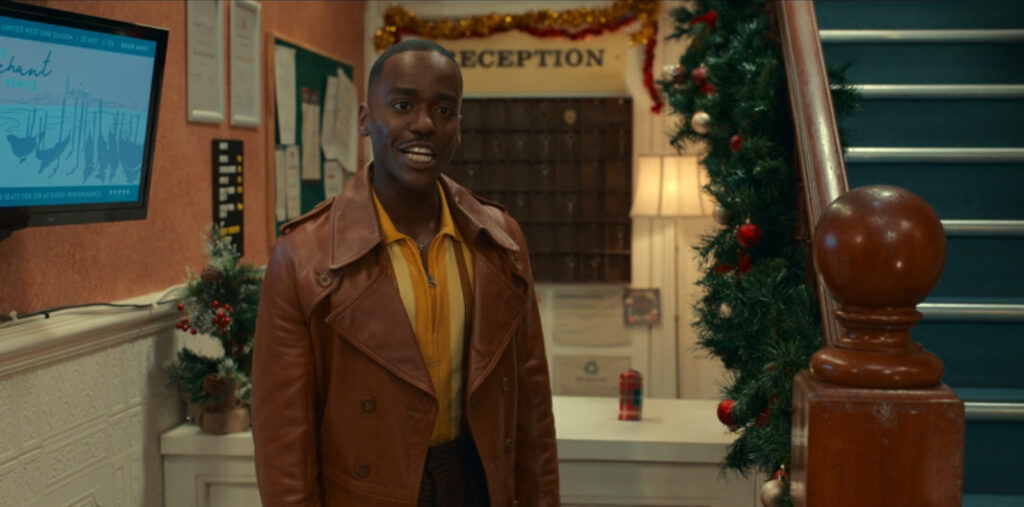
#9: There’s a banana grove there now
Now with Joy and the Star Seed, the Doctor finds out that the company behind all of this is Villengard. Villengard, an arms manufacturer, was first mentioned in Moffat’s episode “The Doctor Dances”. The company has been referenced a few times over the show’s history. It has featured in both “Twice Upon a Time” and, more recently, “Boom!”.
The Doctor has been fighting against the arms manufacturer for a long time now, too. Sometime before or during his time as the Ninth Doctor (Christopher Eccleston), he very effectively shut down one of their factories in the 51st century. A main reactor going critical and vaporizing the entire thing works, right?
#10: There seems to be something lodged in its throat…
Shortly after the Doctor discovers Villengard’s involvement, though, the briefcase is swallowed by a massive T-Rex! It seems to be a habit for these giant dinosaurs to gobble up important things in the show. In the series 8 opener “Deep Breath”, Steven Moffat also had a T-Rex swallow an important piece of tech- the Doctor’s TARDIS!
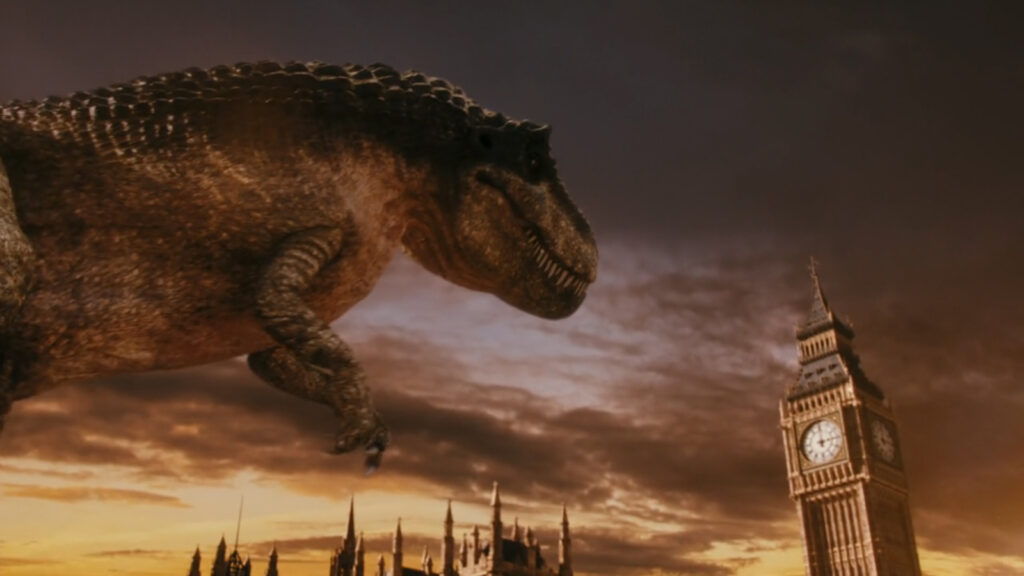
Though we don’t find out exactly what became of this T-Rex, hopefully the dino had a less traumatic end than the one the Doctor accidentally brought along to Victorian London in “Deep Breath”.
Bonus Easter Egg
And for one last little reference to other works by Steven Moffat in “Joy to the World”, we look at the episode’s cast. Though most of the guest cast haven’t worked on anything written by him before, one name may stand out to some.
Jonathan Aris is part of the cast of this episode. For fans of Moffat’s “Sherlock”, he is best known as Philip Anderson. Anderson worked in forensics for the Metropolitan Police and did not get along with Sherlock. Later, he became one of the biggest champions of the theory that Sherlock did not die in “The Reichenbach Fall”.
In “Joy to the World”, Jonathan Aris is hardly immediately recognizable, though! He plays the Silurian manager of the Time Hotel- a brief carrier of the Star Seed before it is passed to Joy.
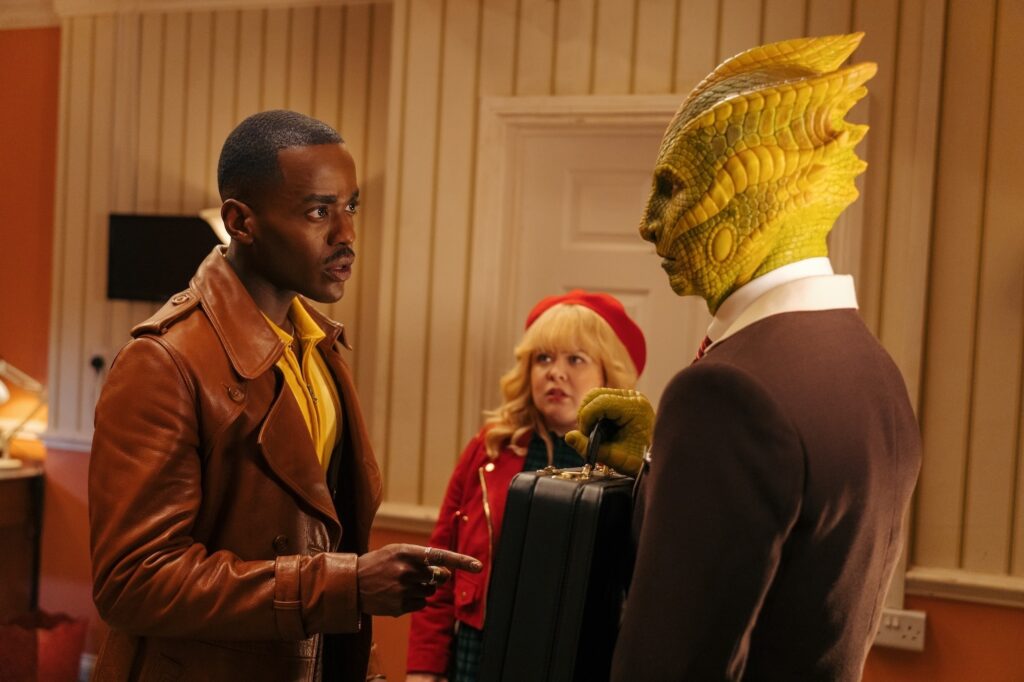
Did you catch all of these references and Easter eggs in “Joy to the World”? Are there any that we missed? Let us know!
“Joy to the World” is streaming on Disney+ where available and on BBC and iPlayer in the UK.
Join the Conversation!
Are you excited about Doctor Who? Let us know your thoughts! And be sure to join our Discord for discussions about Doctor Who at Temple of Geek!


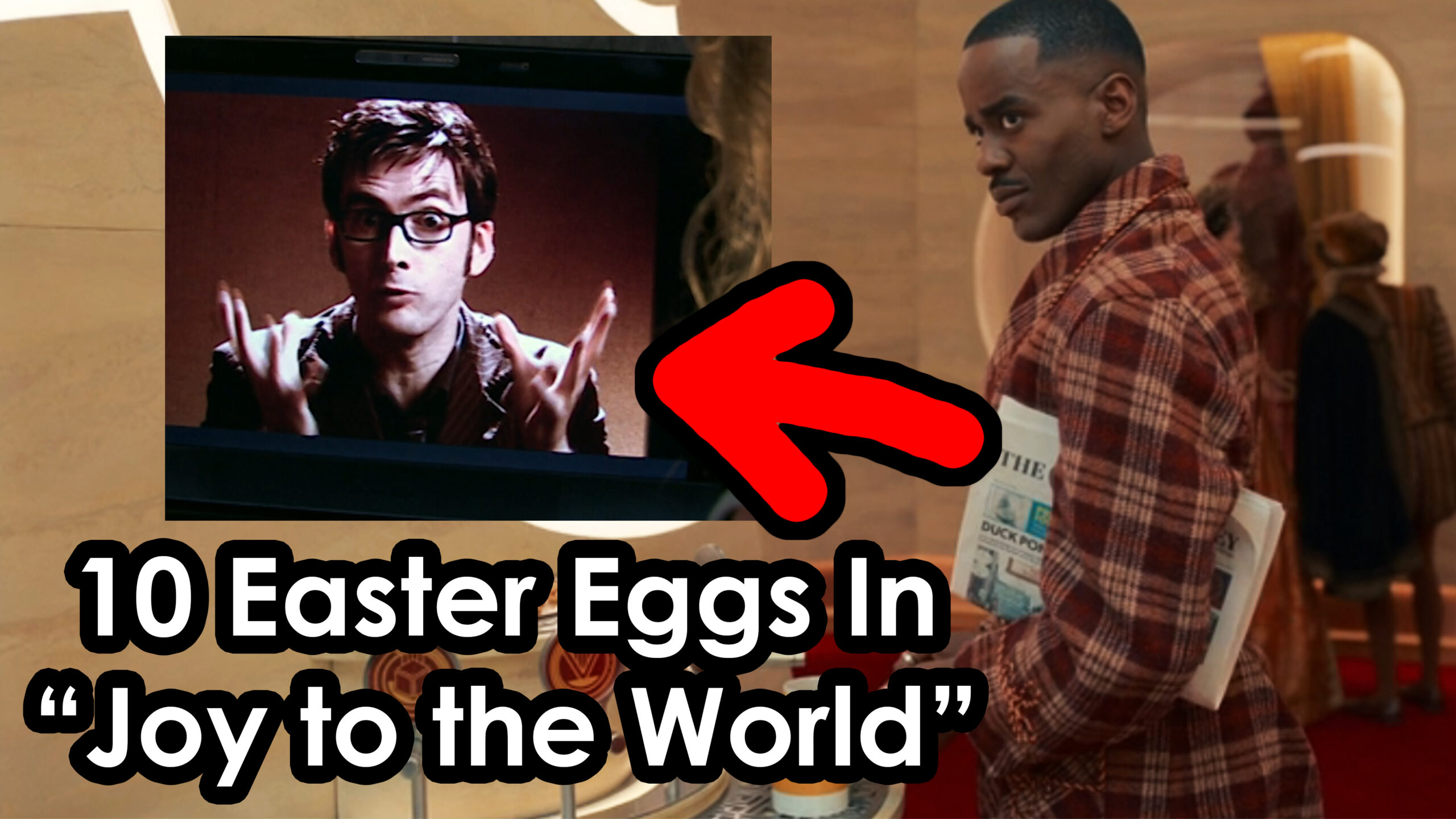
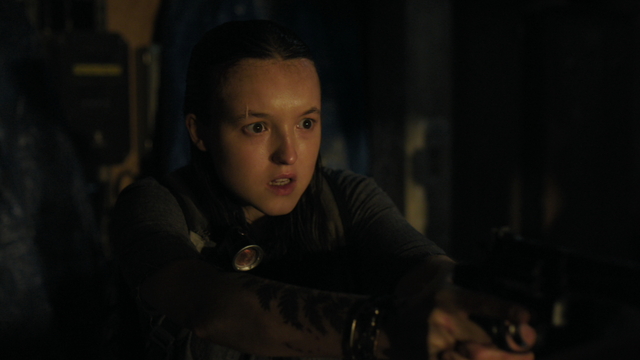
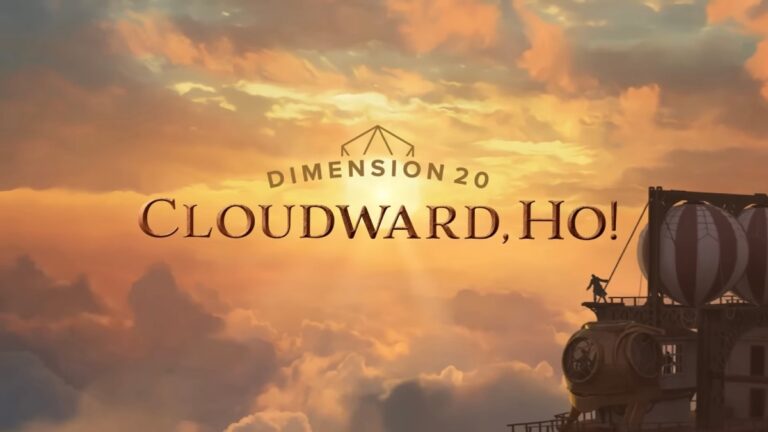


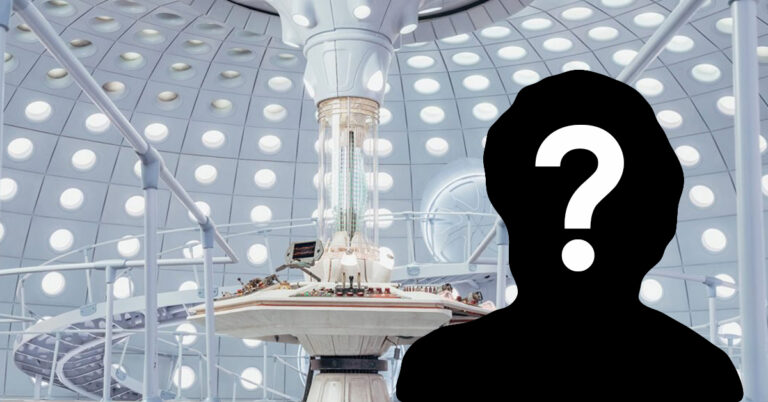

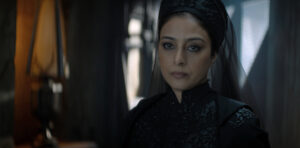
One thought on “Ten “Joy to the World” Easter Eggs You Might Have Missed!”